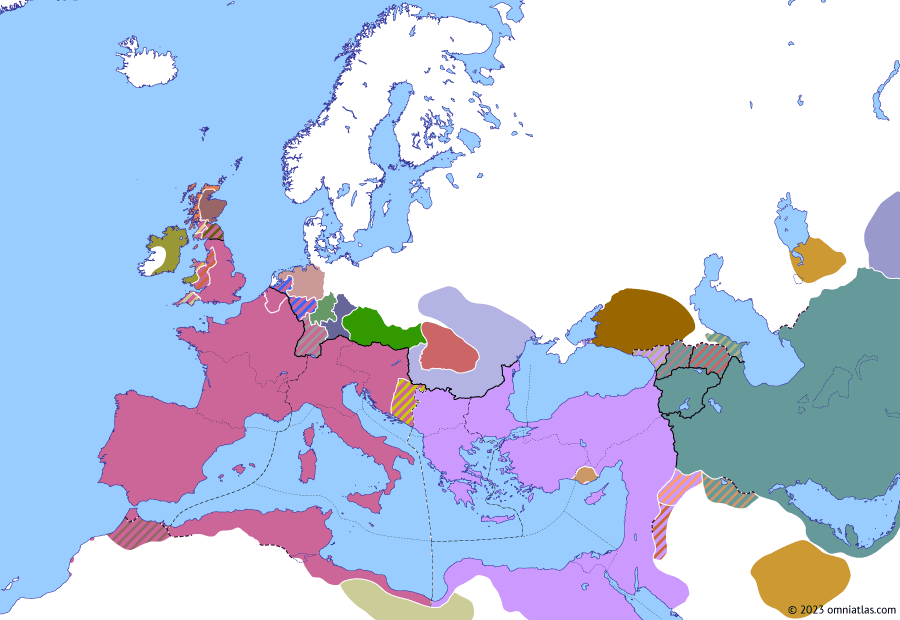Europe 405: Alaric and Stilicho

mid 405
mid 405
Theodosian Dynasty: Divided Empire
-27–68 Julio-Claudian Dynasty
68–96 Flavian Dynasty
96–192 Nerva–Antonine Dynasty
192–235 Severan Dynasty
235–268 Crisis of the Third Century: Turmoil
268–284 Crisis of the Third Century: Restoration
284–311 Diocletian and the Tetrarchy
311–363 Constantinian Dynasty
363–383 Valentinianic Dynasty
383–408 Theodosian Dynasty: Divided Empire
408–425 Theodosian Dynasty: The West Besieged
425–441 Theodosian Dynasty: Fall of Africa
441–457 Theodosian Dynasty: Hunnic Wars
457–1803 NO MAPS FOR THIS PERIOD YET
1803–1814 Napoleonic Wars
1814–1815 Vienna and Waterloo
1815–1848 Congress Europe
1848–1850 Springtime of Peoples
1850–1859 Crimean War
1859–1862 Italian Unification
1862–1871 German Unification
1871–1914 Imperial Europe
1914–1918 Great War
1918–1922 Armistice Europe
1922–1939 Rise of Fascism
1939–1942 World War II: Blitzkrieg
1942–1945 World War II: Fall of the Third Reich
1945–1990 Cold War
1990–2010 Post-Cold War Europe
2010–pres Crisis of Europe
Alaric and Stilicho
25 Aug 383 Revolt of Magnus Maximus
early 387 Peace of Acilisene
Jul 388 Battle of the Save
Apr 390 Massacre of Thessalonica
22 Aug 392 Arbogast and Eugenius
5 Sep 394 Battle of the Frigidus
17 Jan 395 Division of the Roman Empire
fall 395 Alaric’s Rebellion
early 396 Hunnic invasion of the East
late 397 Gildonic Revolt
Apr 400 Coup of Gainas
early 402 Alaric’s invasion of Italy
mid 405 Alaric and Stilicho
sum 406 Radagaisus
31 Dec 406 Crossing of the Rhine
spr 407 Revolt of Constantine III
spr 408 Stilicho vs Constantine III
After returning to Italy in spring 402, Stilicho defeated Alaric at Pollentia and Verona, but allowed the Gothic king to settle in Pannonia as a foederate of the Western Empire. Alaric remained there peacefully until early 407 when, during a period of East–West tension, he temporarily occupied part of Eastern Illyricum with Stilicho’s backing.
This map has in-depth notes in the Journal, exclusive to Patrons on Classical Tier and above. Find them in the events descriptions, marked with the Journal icon .